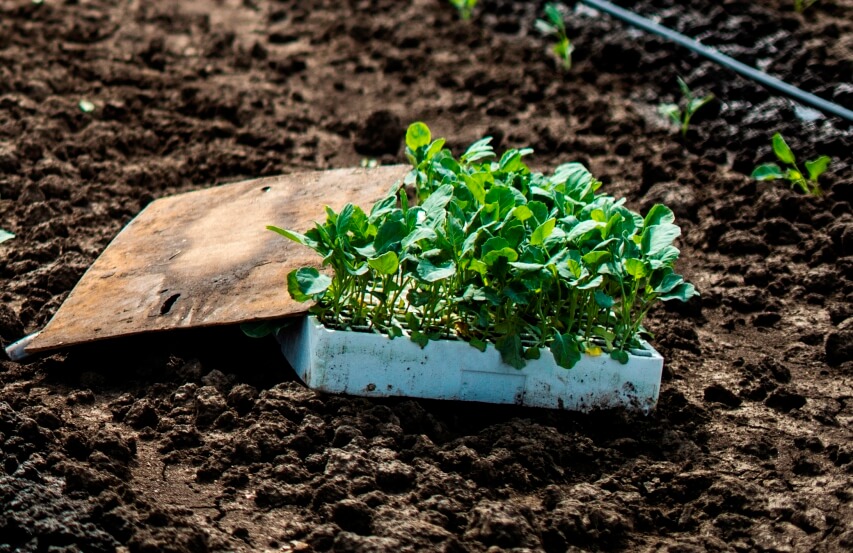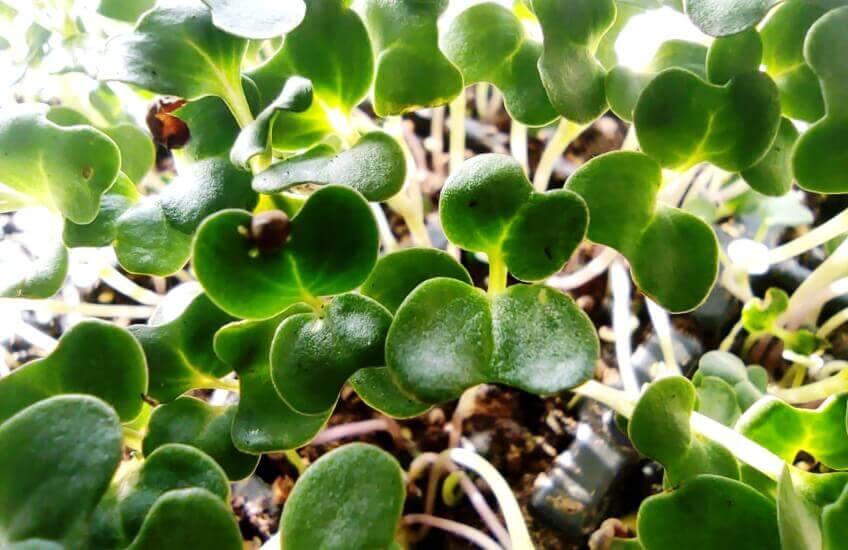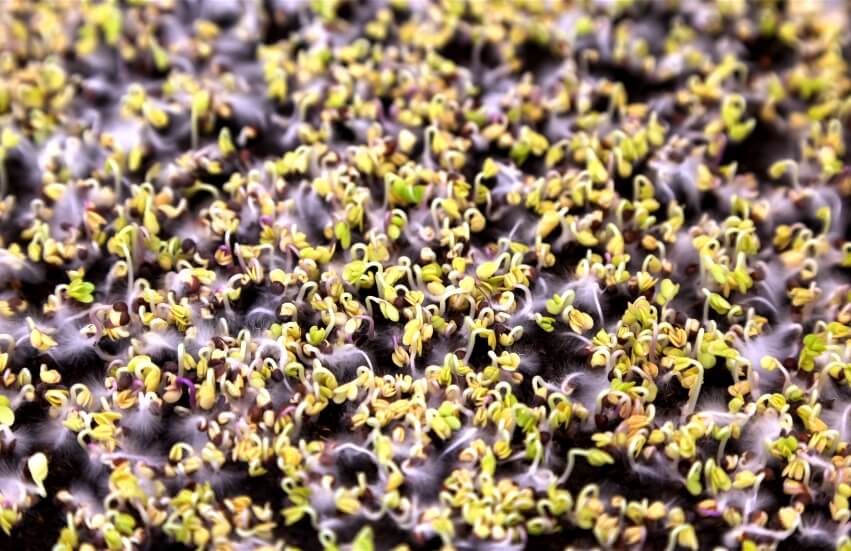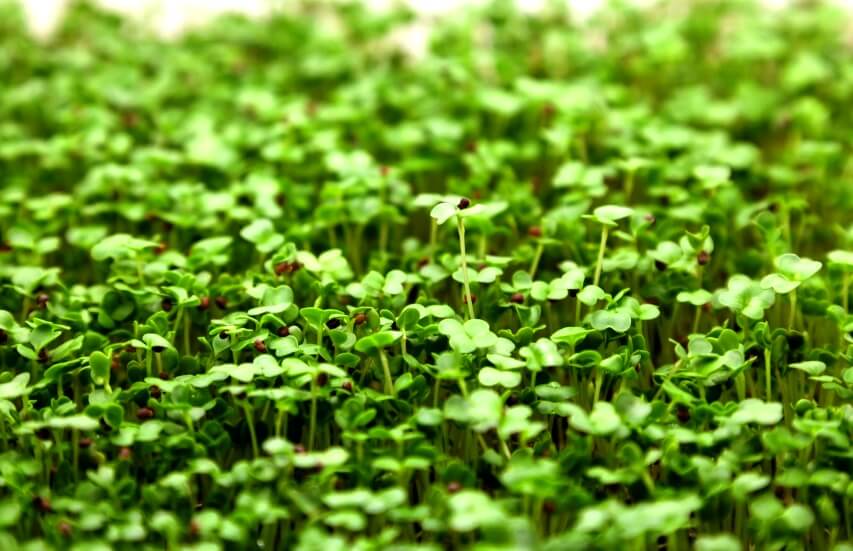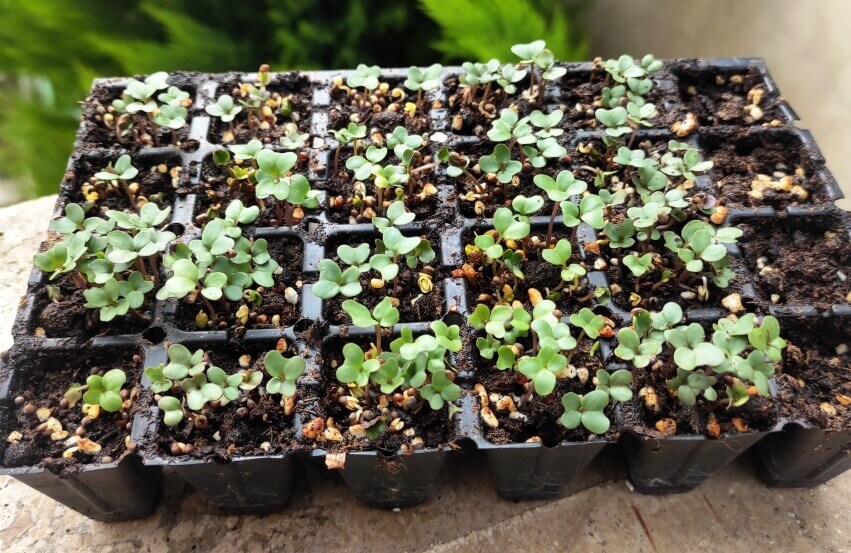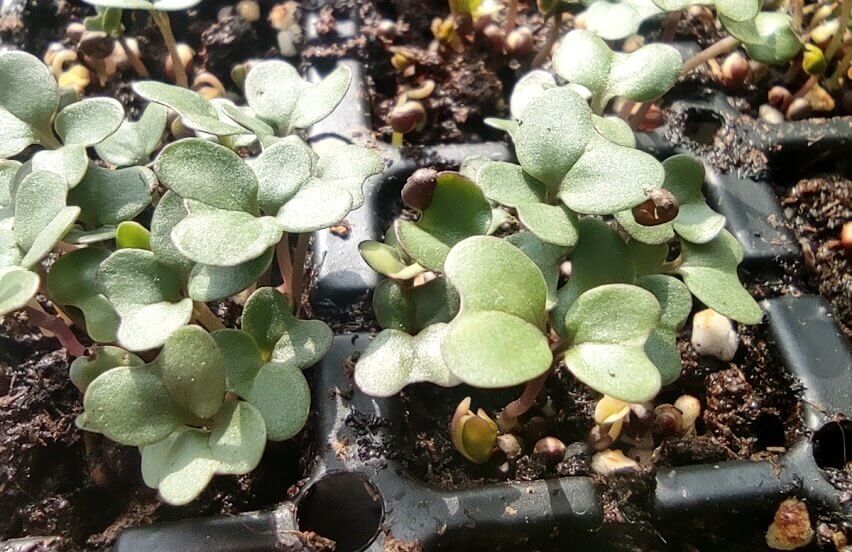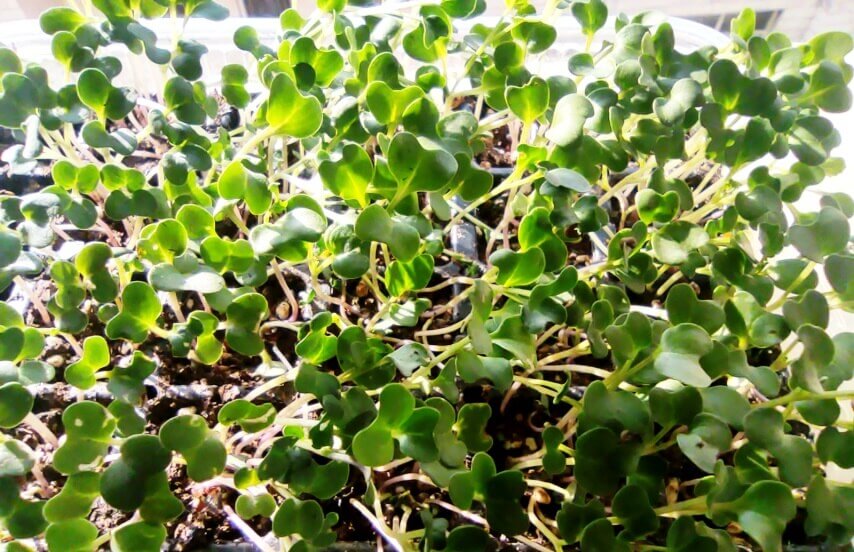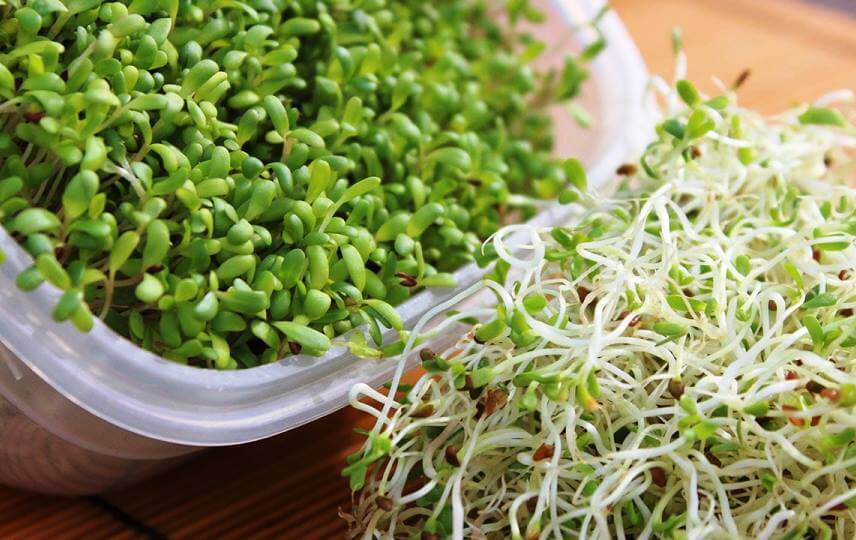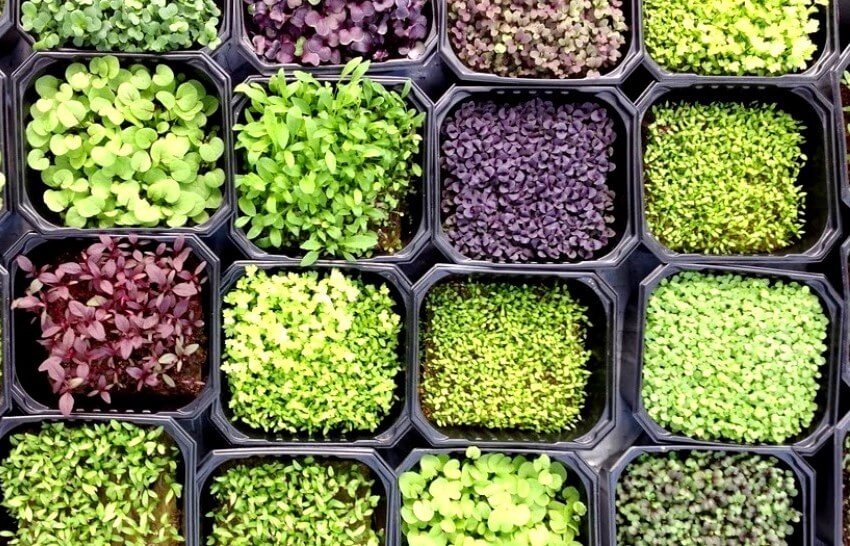Broccoli microgreens are among the most straightforward and fastest-growing micro plants. They do not require much care and usually are ready to harvest in 10 days of planting. They are also incredibly fine, delicious, and nutritionally dense, similar to broccoli sprouts.
Broccoli greens are excellent, although there is some disagreement about the flavor. Some people believe immature shoots taste like mature broccoli, while others think they taste more like cabbage. In any case, growing and eating this microgreen is a delightful experience.
If Like to know more about microgreens, check these articles:
<<What Are Microgreens >> and <<Best Microgreens For Smoothies>>
Broccoli history
Broccoli is a descendant of wild cabbage, which grows wild in regions of Europe. It’s unclear whether Romans cultivated it or not, but it is evident that it was popular in Italy long before it was exported to the rest of the world. Broccoli is an Italian term that means “arm” ( braccio ).
For much of its early existence, broccoli was frequently confused with its parent plant, cauliflower. Its history is not well recorded due to this lack of clarity. Broccoli was brought to North America by Italian immigrants in the early nineteenth century, and it took another century for it to become generally known and approved.
Broccoli microgreens overview
| Family | Brassicaceae |
| Recommended Varieties | Standard Broccoli, DiCicco, Waltham |
| Nutrition | Vitamin A, B, C, E, k Sulforaphane, calcium, Magnesium, Phosphorous, potassium and iron |
| Average days to germinate | 3 to 4 days |
| Average days to harvest (after germination) | 5 to 7 days |
| Difficulty | Easy |
Broccoli Microgreens vs. Broccoli Sprouts
Sprouts and microgreens both begin with seeds that have been germinated, but the methods utilized and the results are different. Broccoli sprouts do not have leaves, but broccoli microgreens are complete plants with leaves, stems, and roots. Here are some of the differences:
- Growing Mediums: Microgreens require a thin layer of soil, paper towels, or a growing medium in a container to sow the seeds before germination. However, all you need is a jar and some water for cultivating sprouts.
- Light Requirements: Sprouts must be kept in the dark to maintain their unique off-white stalks. In contrast, microgreens require light to initiate photosynthesis and turn green.
- Time To Harvest: Sprouts can be eaten as soon as little stems grow, typically two to seven days after germination. But, harvesting microgreens might take anywhere from seven to fourteen days.
Broccoli microgreens Nutrition and benefits
Broccoli microgreens provide numerous health and nutritional benefits. They are high in Sulforaphane, a potent antioxidant proven to diminish the effects of free radicals in the human body and protect us from cancer. Glucoraphanin-rich broccoli microgreens have been demonstrated in several trials to lower oxidative stress and inflammation in the kidneys and blood pressure in the cardiovascular system.
Broccoli microgreens contain twice as much vitamin C as lemon and spinach, making them a powerful immune system booster. Broccoli micros are also high in vitamin A, a nutrient that aids in the health and strength of our eyes, skin, teeth, and bones. Raw, steaming, or stir-fried broccoli microgreens are all options. They are visually pleasing, especially when used to garnish salads or as a topping for sandwich fillings. They are even better drizzled with your favorite salad dressing or low-calorie mayonnaise.
How to Grow Broccoli microgreens
To Grow Broccoli microgreens indoors, you must take the following steps.
- Broccoli seeds come in different varieties, all of which can be grown as microgreens. Which one you choose is determined by your personal preferences and local availability. You can produce microgreens with conventional seeds, but organic seeds are recommended as they are free of dangerous ingredients. Microgreen seeds are selected precisely for their capacity to germinate quickly. And in one to two weeks, you will have excellent greens to eat.
- Plant around 1 -2 tablespoons of seeds in shallow trays 1-2 inches deep filled with pre-moistened sterile soil. Plant the seeds in the soil by softly spreading them on top. Spread a thin layer of pre-sifted dirt on top of the seeds and gently push the soil down.
- Take your humidity dome, tray, or plate and cover the seeds with it. If you use a humidity dome, close the vents to keep the moisture and heat within. Leave the covers for 2–3 days, or until any sprouts appear. Once the seeds have germinated, keep the soil moist by gently watering it or spraying it with water.
- Keep the covers on for 2 – 3 days or until you begin to see some sprouts. Once germination occurs, keep the soil moist by watering it gently or spraying it with some water.
- Place the tray and sprouts in front of a sunny window or beneath a grow lamp.
A week after germination, the broccoli microgreens are ready to harvest. Broccoli micro leaves are small and heart-shaped, with light green-white stalks. Do not let it too long before cutting the crop, as the lower leaves may begin to yellow.
How to consume Broccoli Microgreens
It would be better to eat broccoli microgreens uncooked and as soon as possible to get the most nutritional value out of them. However, broccoli microgreens can be boiled and still provide roughly 80% of the nutritious value when added to soups or stews and cooked for five minutes or less.
Broccoli microgreens can be eaten in a variety of ways. You can add nutrient-dense broccoli microgreens to salads, sandwiches, and burgers or use them in nutrient-dense juices and smoothies. They pair well with cheese and vegetables, and you can add broccoli microgreens to omelets, poached eggs, dips, and pasta sauces for added taste and nutrition.
Conclusion
Among different types of microgreens, Broccoli microgreens are one of the easiest and fast-growing ones. They are high in Sulforaphane. It has been proven that Sulforaphane can reduce the effects of free radicals in the human body and, as a result, protect humans against cancer.
Broccoli microgreens have twice the amount of vitamin C as lemon and spinach, making them immune system boosters. They can be consumed in many different ways. They are nutrient-dense and can be used in salads, sandwiches, burgers, and nutrient-dense juices and smoothies.


